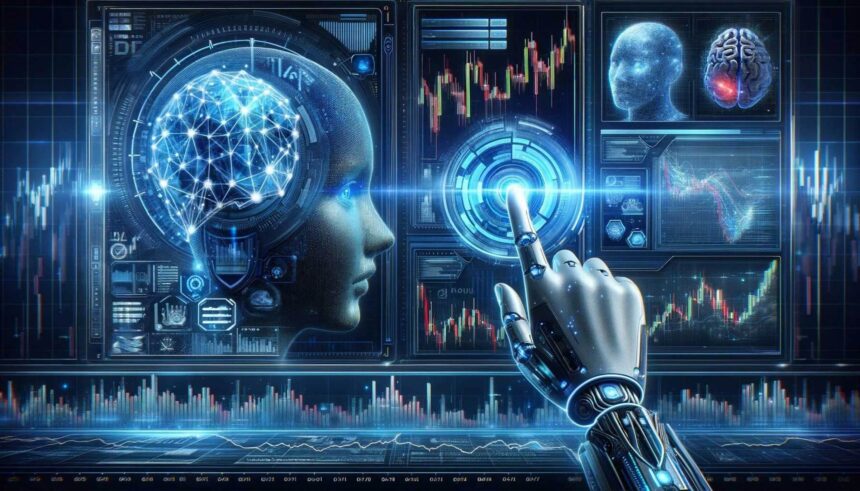Artificial Intelligence (AI) has rapidly evolved in recent years, revolutionizing various industries including finance. In the forex market, AI technology is increasingly being used to analyze data, make predictions, and execute trades at speeds and accuracies beyond human capability. This article explores the impact of AI on the forex market, from its evolution and role in market analysis to the benefits, challenges, and future outlook of AI integration in trading.
AI’s Evolution in Forex Trading
AI technology has significantly evolved in the forex market, where algorithms are now able to process vast amounts of data in real-time and make split-second trading decisions. With the advent of machine learning and deep learning techniques, AI systems can continuously improve and adapt to changing market conditions, providing traders with valuable insights and opportunities. This evolution has led to the automation of trading strategies and the development of sophisticated trading algorithms that can outperform human traders in terms of speed and accuracy.
AI’s Role in Market Analysis and Prediction
AI plays a crucial role in market analysis and prediction by analyzing historical data, identifying patterns, and making informed forecasts about future price movements. AI algorithms can detect market trends, anomalies, and correlations that may not be apparent to human traders, enabling them to make more informed trading decisions. By leveraging AI technology, traders can reduce emotional bias, eliminate human errors, and improve their overall trading performance.
Benefits of AI Integration in Forex Trading
- Increased efficiency: AI systems can process large amounts of data and execute trades at a much faster pace than human traders.
- Improved accuracy: AI algorithms can make data-driven predictions and decisions based on complex mathematical models, reducing the likelihood of errors.
- Enhanced risk management: AI systems can analyze market conditions and adjust trading strategies in real-time to minimize risks and maximize profits.
Challenges and Risks of AI in the Forex Market
Despite its numerous benefits, AI integration in the forex market also poses several challenges and risks, including:
- Technical glitches: AI systems are susceptible to technical errors and malfunctions, which could lead to significant financial losses.
- Over-reliance on technology: Traders may become overly dependent on AI algorithms, neglecting their own judgment and experience.
- Regulatory scrutiny: The use of AI in trading raises regulatory concerns regarding transparency, accountability, and market manipulation.

Regulatory Considerations for AI in Trading
Regulatory bodies are increasingly scrutinizing the use of AI in trading to ensure market integrity and investor protection. Some key regulatory considerations for AI in trading include:
- Transparency: Traders are required to disclose the use of AI algorithms and the factors influencing their trading decisions.
- Compliance: AI systems must comply with existing regulations and ethical standards to prevent market abuse and unfair practices.
- Oversight: Regulators may impose reporting requirements and conduct audits to monitor the use of AI in trading and detect any potential misconduct.
Future Outlook: AI’s Continued Influence on Forex Trading
AI technology is expected to continue shaping the future of forex trading, with advancements in machine learning, natural language processing, and quantum computing. As AI systems become more sophisticated and integrated into trading platforms, traders can expect:
- Enhanced trading strategies: AI algorithms will become more adaptive, responsive, and capable of exploiting market inefficiencies.
- Personalized trading experiences: AI technology will enable traders to receive customized recommendations, insights, and alerts tailored to their individual preferences.
- Regulatory evolution: Regulators will likely develop new guidelines and frameworks to govern the use of AI in trading, balancing innovation with risk management and compliance.
Comparison Table:
| Element | Role in Trading | Example |
|---|---|---|
| Machine Learning Models | Analyze historical and real-time data to generate predictive signals | A model forecasts stock price trends based on past behavior |
| High-Frequency Algorithms | Execute thousands of trades in fractions of a second to exploit micro-opportunities | Arbitrage strategy trading the same asset on different markets |
| Natural Language Processing (NLP) | Extracts insights from unstructured text such as news or reports | Real-time analysis of Twitter sentiment to inform trades |
As AI technology continues to evolve and reshape the forex market, traders must carefully navigate the benefits and risks of AI integration while adhering to regulatory requirements. By leveraging AI’s analytical capabilities and automation tools, traders can gain a competitive edge in the market while ensuring compliance with industry standards. Ultimately, the future of forex trading will be defined by the seamless integration of AI technology, providing traders with unprecedented opportunities for success and growth.

Great insights into how machine learning models work in trading! It’s fascinating stuff for sure.
I didn’t know AI was used so much in forex trading. It makes sense with all the data they need to analyze.
AI’s ability to predict market trends is impressive. It could really improve trading strategies.
Interesting how AI can give personalized recommendations to traders. Customization is key!
AI is really changing the forex market. It’s amazing how it can process data so fast and accurately.
The article mentions regulatory concerns with AI in trading. I think it’s important for transparency and fairness.
The use of AI in trading seems to help reduce human error. That’s a big advantage for traders.
I’m curious about how regulators will handle the increase of AI use in trading. New rules might be needed soon.
Technical glitches with AI systems are a real concern. Traders need backup plans just in case.
AI’s role in risk management is crucial. Minimizing risks while maximizing profits sounds ideal.